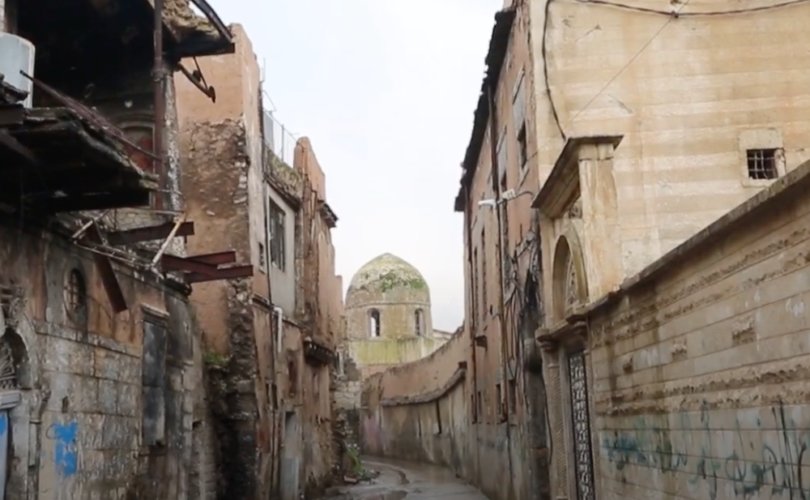You’re invited! Join LifeSite in celebrating 25 years of pro-life and pro-family reporting at our anniversary Gala August 17th in Naples, Florida. Tickets and sponsorships can be purchased by clicking here.
MOSUL, Iraq (LifeSiteNews) — Workers discovered a dozen ancient relics and parchments belonging to several saints while restoring a church in Iraq.
Last month, six stone containers with Aramaic inscriptions of saints and several manuscripts in Syriac and Aramaic languages were found in St. Thomas Church in Mosul, as reported by PIME AsiaNews. The historic Syriac Orthodox church had been damaged by ISIS.
“A discovery of great historical, religious and cultural value that confirms — once again— the bond of Christians with Iraq and, more generally, with the Middle Eastern region of which they are the original people and an integral component since the first centuries,” the report reads.
The church had been damaged while ISIS soldiers used it as a military base, and the relics were discovered by workers carrying out repairs. When the containers came to light, the workers immediately notified the Syrian Orthodox Archbishop of Mosul, Mor Nicodemos Sharaf.
The ancient church held Syriac, Armenian, and Arabic parchments wrapped and protected in glass bottles. One container held a relic, an inscription referring to Saint Theodore, a 3rd century Roman soldier who was beheaded for converting to Christianity.
The relics of five other saints were discovered. They belong to Saint Simon ‘the Zealot,’ one of the Twelve Apostles; Saint John, another of the Twelve; Saint Simeon the Wise, traditionally held to be the Biblical Simeon who welcomed the infant Jesus in the Temple of Jerusalem; Mor Gabriel, a sixth-century bishop of the Tur Abdin region in southeast Turkey; and Saint Gregory Bar Hebraeus, a Syrian Orthodox regional primate in the 13th century.
St. Thomas Church has seen much war and destruction since its founding in the 7th century. According to tradition, the church was first built on the site of the house where the apostle St. Thomas stayed while in Mosul. In 1743, the church was severely damaged during the Persian siege of Mosul as part of the Ottoman–Persian War.
The current building was constructed in the 18th century as a sign of appreciation for the Christians who helped defend the city during the siege.
According to PIME AsiaNews, the church was miraculously preserved from destruction during an ISIS occupation in 2017. While the surrounding streets were destroyed by bombs and bullets as the terrorist group took over the city, St. Thomas Church sustained surprisingly little harm to the exterior. The ancient Catholic church stood strong amid the battle as the surrounding mosques were destroyed.

